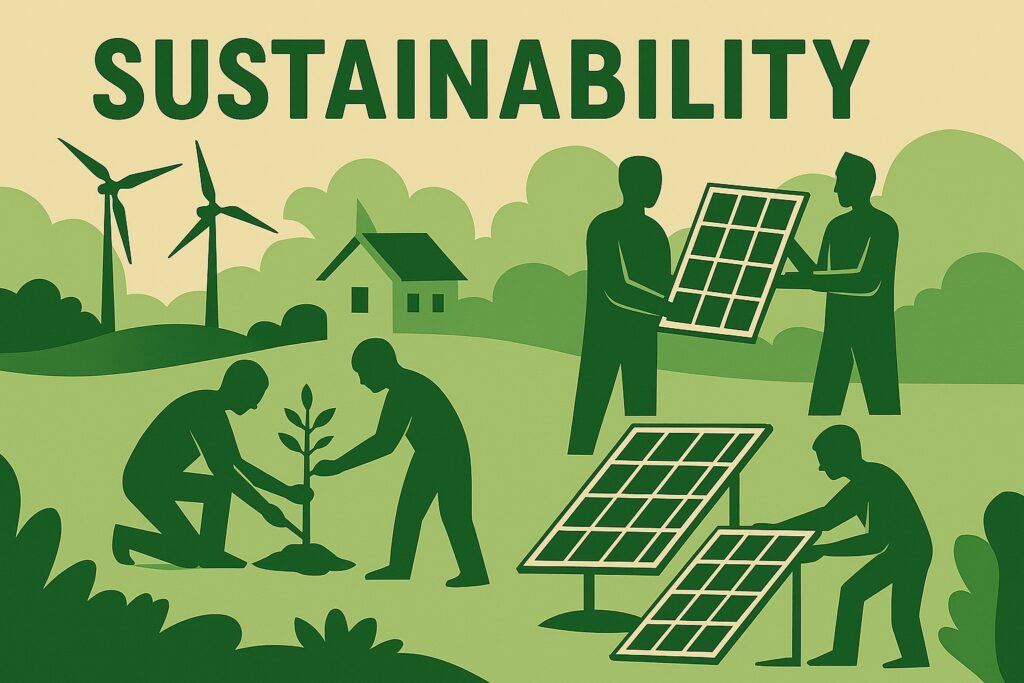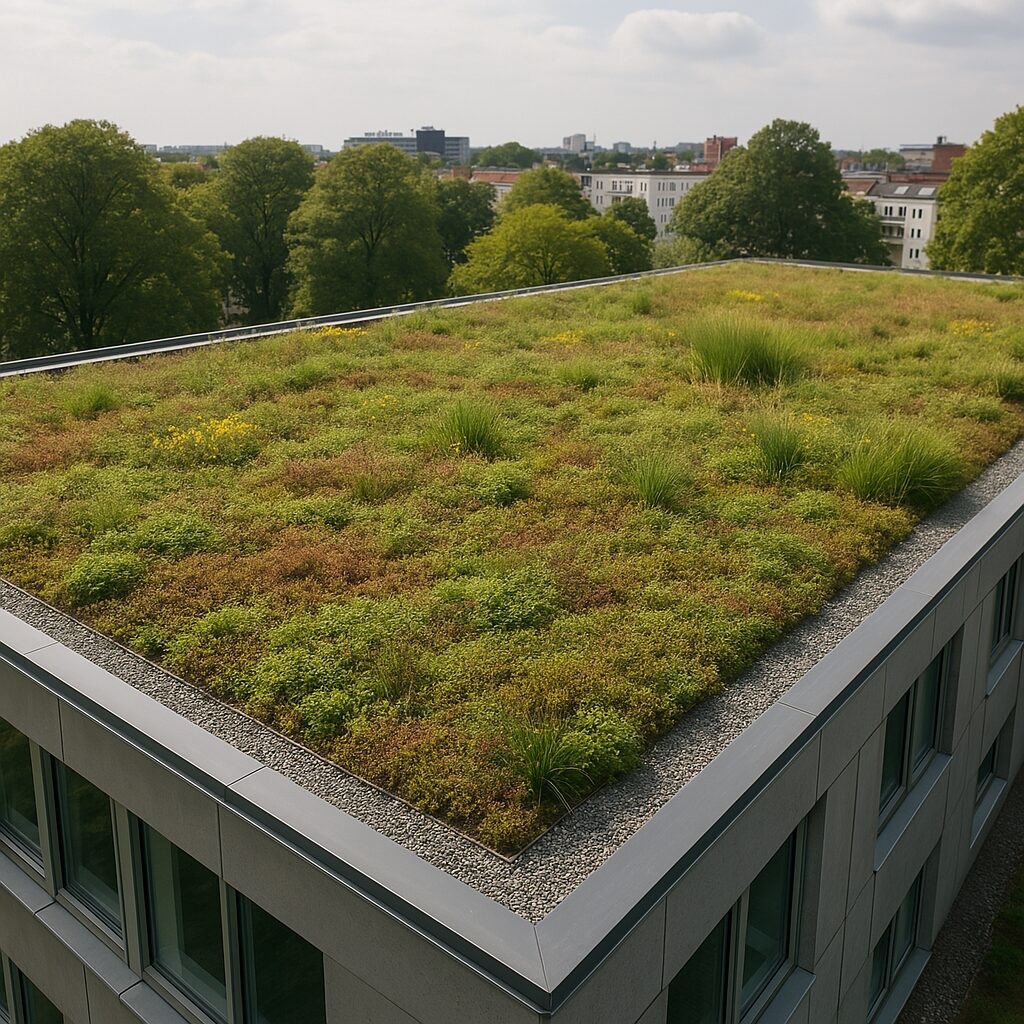
Different Strategies for Sustainable Land use
Conservation tillage and cover cropping
Conservation tillage and cover cropping are agricultural practices designed to improve soil health, enhance sustainability, and reduce environmental impact. Conservation tillage minimizes soil disturbance by reducing the frequency and depth of plowing, helping to preserve soil structure, moisture retention, and beneficial microorganisms. By leaving crop residues on the field, it also reduces erosion and improves carbon sequestration, making it an essential approach for mitigating climate change.
Cover cropping, on the other hand, involves planting specific crops, such as clover, rye, or legumes, between main crop cycles to protect and enrich the soil. These cover crops help prevent erosion, suppress weeds, and enhance soil fertility by fixing nitrogen and adding organic matter. Together, conservation tillage and cover cropping promote sustainable farming by enhancing soil resilience, reducing the need for synthetic fertilizers, and improving overall crop productivity while minimizing harmful environmental impacts.
Green roofs and permeable pavements
Green roofs and permeable pavements are key elements of sustainable land use, helping urban areas balance development with environmental responsibility. Green roofs involve the installation of vegetation atop buildings, which not only enhances insulation and reduces energy consumption but also manages stormwater by absorbing rainfall and reducing runoff. These living rooftops improve air quality, promote biodiversity, and mitigate the urban heat island effect by lowering surrounding temperatures.
Permeable pavements are designed to allow water to pass through their surface and into the ground, reducing stormwater runoff and preventing flooding. Made from materials such as porous concrete, asphalt, or interlocking pavers, they promote groundwater recharge and minimize the strain on drainage systems. By decreasing pollution from surface runoff and improving water management, permeable pavements contribute to a more resilient infrastructure.
Together, green roofs and permeable pavements play a vital role in sustainable land use by enhancing urban ecosystems, improving water management, and reducing environmental impact, making cities more livable and climate-resilient.
Agroforestry
Agroforestry is a sustainable land-use practice that integrates trees and shrubs into agricultural landscapes to enhance environmental, economic, and social benefits. By combining forestry with farming, agroforestry improves biodiversity, soil health, and water conservation while creating resilient ecosystems. The presence of trees helps prevent soil erosion, enhances carbon sequestration, and improves microclimates, making land more productive in the long run.
Agroforestry also contributes to sustainable livelihoods by providing diverse sources of income, including timber, fruits, nuts, and medicinal plants, reducing dependency on single crops. This method also improves habitat connectivity for wildlife and supports pollinators, reinforcing ecosystem stability. By utilizing natural processes to enhance agricultural productivity while mitigating climate change impacts, agroforestry is a crucial approach in sustainable land use, promoting long-term environmental stewardship alongside economic viability.
Public transit and cycling infrastructure
Prioritizing public transit and cycling infrastructure is a crucial strategy for sustainable land use, reducing environmental impact while fostering efficient urban mobility. By investing in reliable public transportation systems, such as buses, trains, and subways, cities can decrease reliance on personal vehicles, thereby cutting greenhouse gas emissions and improving air quality. Public transit also optimizes land use by reducing the need for extensive road networks and parking spaces, allowing for more green spaces, housing, and commercial development.
Cycling infrastructure, including dedicated bike lanes, secure parking, and bike-sharing programs, encourages active transportation while reducing congestion and pollution. Well-integrated cycling networks make cities more accessible and livable, promoting healthier communities while minimizing the carbon footprint of daily commutes. Together, public transit and cycling infrastructure support sustainable urban planning by lowering emissions, conserving land resources, and improving overall quality of life, ensuring cities are designed for people rather than cars.
Why Sustainable Land Use?
Sustainable land use is essential for balancing environmental conservation, economic development, and social well-being. It ensures that natural resources are managed responsibly, preventing degradation and promoting long-term productivity. By adopting sustainable land-use practices—such as conservation tillage and cover cropping, green roofs, and public transportation infrastructure—communities can mitigate climate change, reduce pollution, and preserve biodiversity. One of the key benefits of sustainable land use is environmental protection. Practices like agroforestry and wetland conservation enhance soil fertility, improve water retention, and support ecosystems that are vital for maintaining biodiversity. This approach also prevents deforestation, reducing carbon emissions and aiding in climate resilience.

Economically, sustainable land use improves efficiency and reduces costs. Agriculture that integrates soil-friendly techniques, such as conservation tillage and cover cropping, leads to higher yields and less dependence on synthetic fertilizers, saving farmers money. Urban planning that prioritizes green infrastructure, like permeable pavements and green roofs, lowers energy consumption, manages stormwater effectively, and creates healthier spaces, benefiting businesses and residents alike. Socially, sustainable land use enhances community well-being by creating greener, healthier living environments. Investing in public transit and cycling infrastructure reduces traffic congestion and improves air quality, making cities more accessible and livable. Thoughtful land use also promotes food security, equitable development, and disaster resilience, ensuring that resources are preserved for future generations.
Sustainable land use is about finding harmony between human needs and nature’s capacity. By prioritizing responsible land management, societies can create resilient environments that support economic prosperity, environmental stability, and improved quality of life for all.

